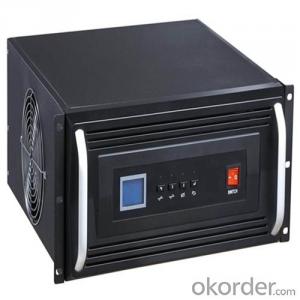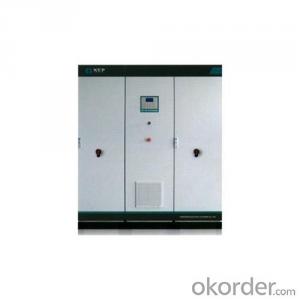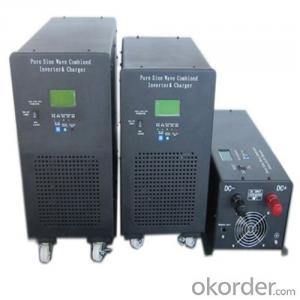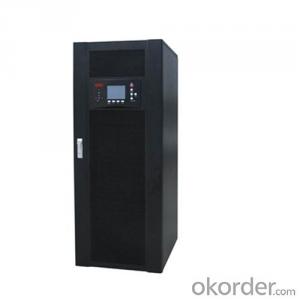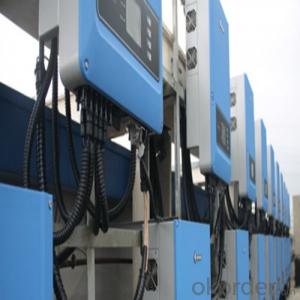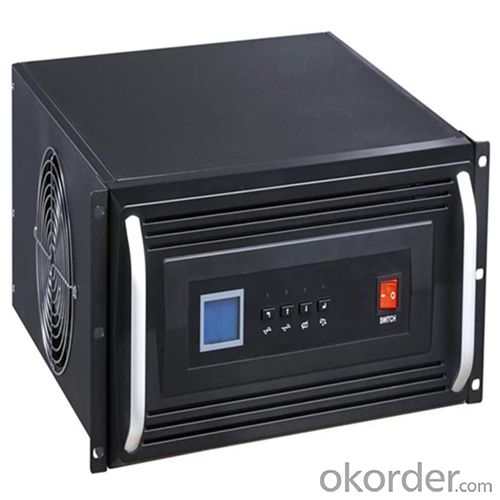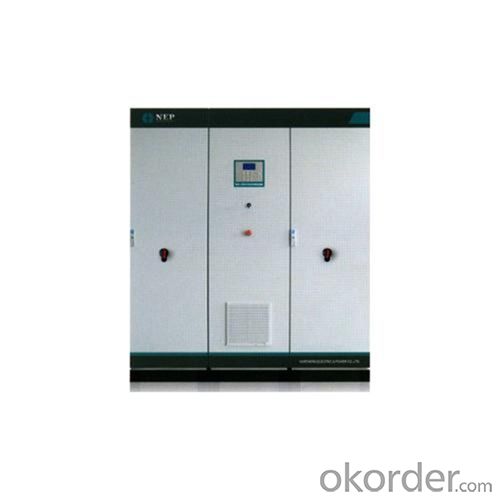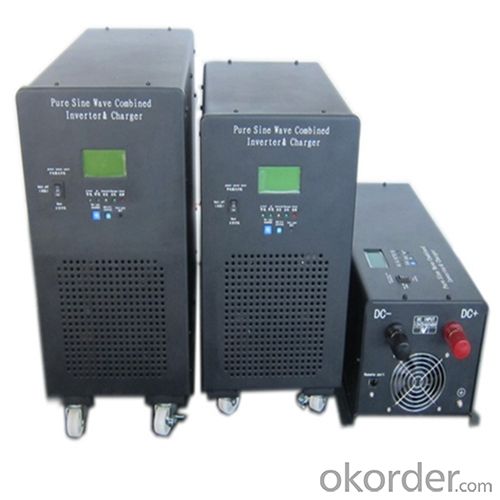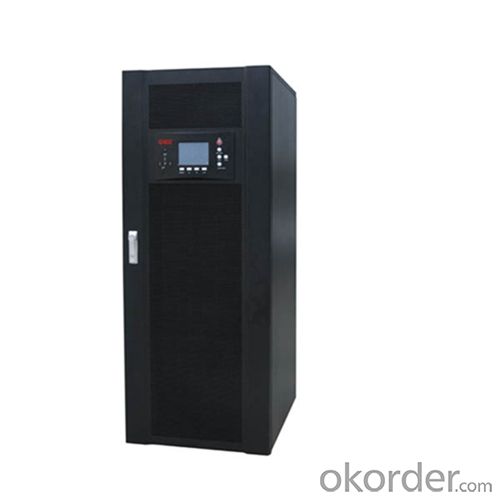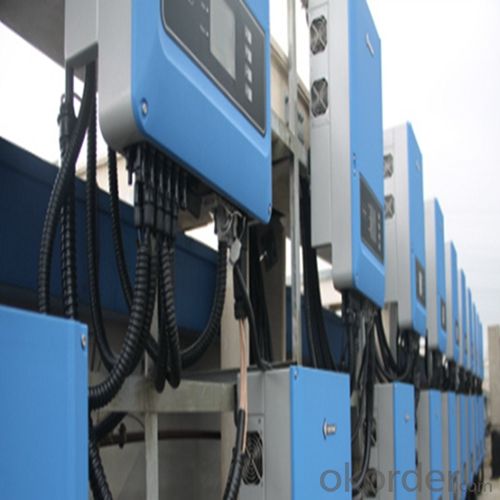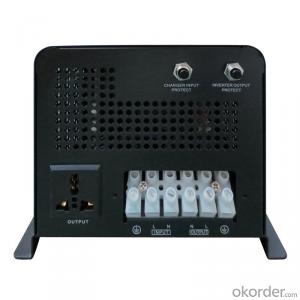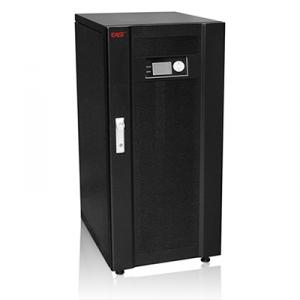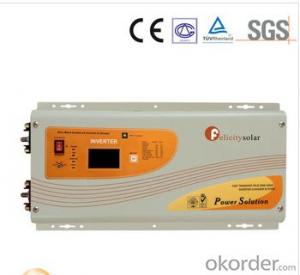Solar Inverter Rv Approved 3000W 24V Pure Sine Wave
- Loading Port:
- Shanghai
- Payment Terms:
- TT OR LC
- Min Order Qty:
- 2 pc
- Supply Capability:
- 3000 pc/month
OKorder Service Pledge
OKorder Financial Service
You Might Also Like
Performance Characteristics
· 1. Suitable for all electrical equipments
· 2. Large LCD display for more detailed content
· 3. CPU controlled; fast transfer time
· 4. Intelligent battery management, prolonging the service life of the battery
· 5. Complete protection function, high reliability
· 6. Can provide high current charge
· 7. Can match different types of batteries
· 8. Disassembled LCD box which can make the operation in a distance of 15 meters
Product introduction
EP series is sine wave low frequency inverter, which is specifically designed for home appliances. It is equipped with a big LCD screen so all information is displayed in detail, which makes it more convenient to use. Charging current of the inverter is adjustable from 5A to 45A and you can also select different charging voltage to charge different types of batteries so batteries are under great protection.
Our Service
Samples
Samples are Available for Testing and Market Test.
Warranty
We provides warranty against defects in materials and workmanship for its Uninterruptible power supply, Power inverter/chargers including inverter12v 24v 48V, Solar charge controllers (“Product”).
OEM Service
OEM service is strictly based on the ISO9001 ISO14001 quality assurance system. The TOP involves the effective teamwork of departments from Sales, R&D, and Engineering, purchasing, production & QA, assuring a high quality product and prompt delivery for customers. The standardization of our quality system and the quality stability has earned us the trust of our customers for 12 years.
We have 10 sets of automatic insertion equipments, ICT PCB testing equipments, ATE automatic testing center and aging workshop for all products. Monthly output of UPS series exceeds 200,000. We have been offering OEM service for over 12 years.
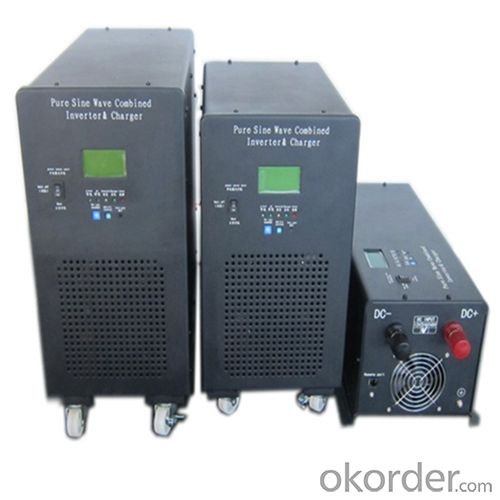
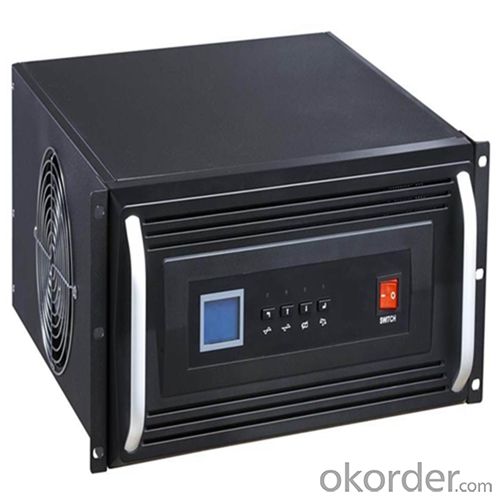
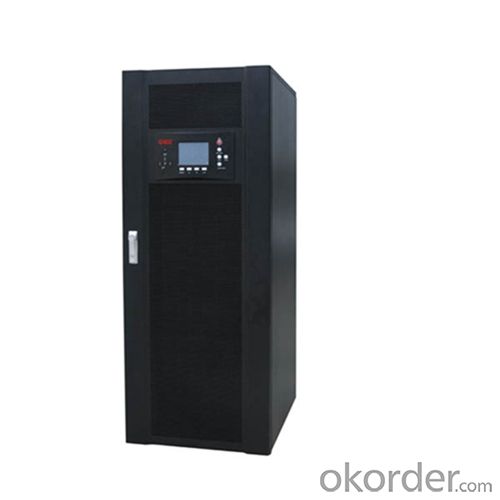
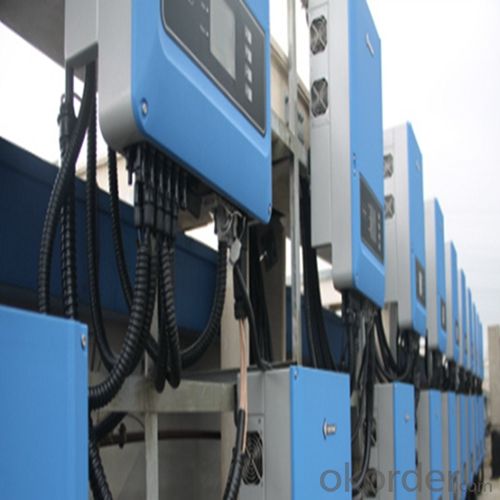
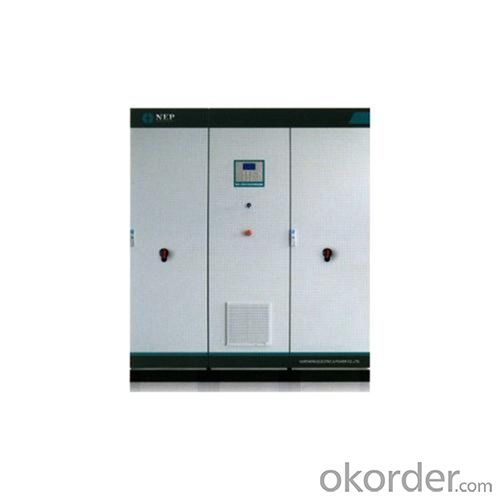
Specifications
Input | |
Input Voltage Range | 182-265VAC |
Output | |
Input Voltage Range | Batt.Mode:50±0.3Hz Mode:48-54Hz(50Hz) or 58-64Hz,Same as AC |
Output Wave Form | Sine Wave (Batt,mode) |
Transfer Time | 10ms(Typical) |
FAQ:
Q: Do you have the CE, TUV, UL Certification?
A: We’ve already passed all the tests, and any certificate is available.
Q: Have you ever sold your products to companies in my country?
A: Of course, we have customers in all general PV markets, but I think we should expand our market share along with the market growth.
Q: When did your company set up? You are a new company, how can I believe your quality?
A: We entered into Solar PV industry in 2005, now we have several plants in manufacturing of a-Si and c-Si panels, and our capacity is 220MW per year. Till now we have already passed all the tests by authorized laboratories, e.g. TUV, CE, UL.
Q: Can you help us install the module if we cooperate with you?
A: We haven’t entered into installation sector, but we have the plan in near future.
Q: How do you pack your products?
A: We have rich experience on how to pack the panels to make sure the safety on shipment when it arrives at the destination.
Q: Can you do OEM for us?
A: Yes, we can.
Q: Can we visit your factory?
A: Surely, I will arrange the trip basing on your business schedule.
- Q: How does a solar inverter affect the overall system performance in different weather conditions?
- A solar inverter plays a crucial role in the overall system performance of a solar energy system in different weather conditions. In sunny weather, the solar inverter efficiently converts the direct current (DC) generated by the solar panels into alternating current (AC), optimizing power output. However, in cloudy or overcast conditions, the solar inverter mitigates the impact of reduced sunlight by employing maximum power point tracking (MPPT) technology, ensuring that the system operates at its peak efficiency and extracts the maximum available energy from the panels. Additionally, advanced inverters can also provide grid stabilization during extreme weather events, such as storms or voltage fluctuations, safeguarding the system and enhancing its performance and reliability. Overall, a well-functioning solar inverter is essential for maximizing energy production and maintaining optimal system performance in varying weather conditions.
- Q: Can a solar inverter be used with a smart home automation system?
- Yes, a solar inverter can be used with a smart home automation system. Many modern solar inverters are equipped with communication interfaces such as Wi-Fi or Zigbee, allowing them to integrate seamlessly with smart home automation systems. This integration enables homeowners to monitor and control their solar energy production, consumption, and storage remotely, and optimize their energy usage for increased efficiency and cost savings.
- Q: Are there any electromagnetic interference concerns associated with solar inverters?
- Yes, there can be electromagnetic interference concerns associated with solar inverters. These concerns mainly arise from the high-frequency switching of power electronics within the inverters. However, modern solar inverters are designed to minimize electromagnetic interference through the use of appropriate filters and shielding techniques. Compliance with relevant electromagnetic compatibility (EMC) standards ensures that solar inverters do not interfere with other electronic devices and are safe to use in residential and commercial settings.
- Q: Are there any safety concerns associated with solar inverters?
- Yes, there are some safety concerns associated with solar inverters. One of the main concerns is the risk of electrical shock or fire due to faulty installation or maintenance. Additionally, there can be potential hazards from exposure to high voltage DC electricity during installation or repairs. It is important to follow proper installation procedures and adhere to safety guidelines to mitigate these risks.
- Q: What is the role of reactive power control in a solar inverter?
- The role of reactive power control in a solar inverter is to maintain the power factor of the system by managing the flow of reactive power. This helps to improve the overall efficiency and stability of the solar power generation system. Reactive power control ensures that the inverter can supply or absorb the necessary reactive power to balance the system, compensate for reactive power losses, and meet the grid requirements.
- Q: Can a solar inverter be used for commercial-scale solar installations?
- Yes, a solar inverter can be used for commercial-scale solar installations. In fact, commercial-scale solar installations often require multiple solar inverters to convert the DC power generated by the solar panels into usable AC power for commercial use. These inverters are designed to handle the higher power output and voltage levels typically found in larger solar installations.
- Q: How does a solar inverter handle grid faults and disturbances?
- A solar inverter handles grid faults and disturbances by constantly monitoring the grid voltage and frequency. In case of a fault or disturbance, the inverter immediately disconnects from the grid to ensure safety and protect itself from damage. It then goes into a standby mode until the grid stabilizes. Once the grid is back to normal, the inverter reconnects and resumes normal operation, ensuring seamless and uninterrupted power supply from the solar panels.
- Q: Can a solar inverter be used in areas with high seismic activity?
- Yes, a solar inverter can be used in areas with high seismic activity. However, it is essential to ensure that the solar inverter is designed to withstand seismic vibrations and has been installed using appropriate seismic-resistant mounting techniques. Special precautions and engineering considerations may be necessary to ensure the inverter's integrity and functionality during seismic events.
- Q: What are the common fault indications in a solar inverter?
- Some common fault indications in a solar inverter include a sudden loss of power output, frequent or recurring tripping of the inverter, abnormal or fluctuating voltage readings, unusual noises or smells emanating from the inverter, error messages or fault codes displayed on the inverter's screen, and physical damage or visible signs of overheating.
- Q: How is the size of a solar inverter determined?
- The size of a solar inverter is typically determined by the total capacity of the solar panels it needs to handle. The inverter should have a capacity slightly higher than the total wattage of the solar panels to ensure efficient conversion of the DC power produced by the panels into usable AC power for household or grid consumption.
Send your message to us
Solar Inverter Rv Approved 3000W 24V Pure Sine Wave
- Loading Port:
- Shanghai
- Payment Terms:
- TT OR LC
- Min Order Qty:
- 2 pc
- Supply Capability:
- 3000 pc/month
OKorder Service Pledge
OKorder Financial Service
Similar products
Hot products
Hot Searches
Related keywords
